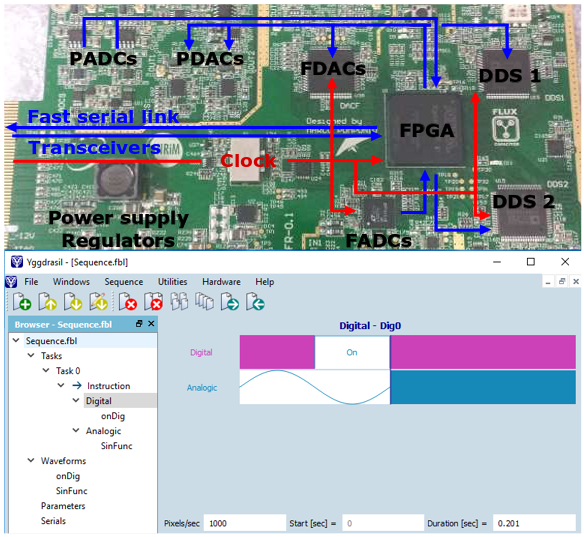 |
Modern experiments with complex quantum systems should ideally be managed by a control apparatus capable of carrying out complex tasks, such as self-optimization procedures and realization of feedback loops acting on different channels. To achieve these goals, we developed a novel control system formed by both a hardware and a software part. Specifically, the hardware is based on a net of interconnected FPGAs able to process incoming and outgoing data directly on board, whereas the software is designed to exploit the capabilities of such a general hardware platform and to be easily expanded to manage other devices or instrumentation changes. E. Perego, et al. |
LAST NEWS
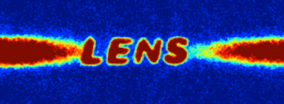 |
We have implemented a new high-resolution imaging system, that also makes it possible to imprint onto the atomic cloud arbitrary optical potentials created with a digital micromirror device (DMD). This will allow us to study quantum transport of fermionic gases in arbitrary geometries -- from the non-interacting limit to the strongly correlated regime, from the clean to the disordered case. An upgrade of the setup for the production of quasi-two-dimensional clouds is now under way, stay tuned! |
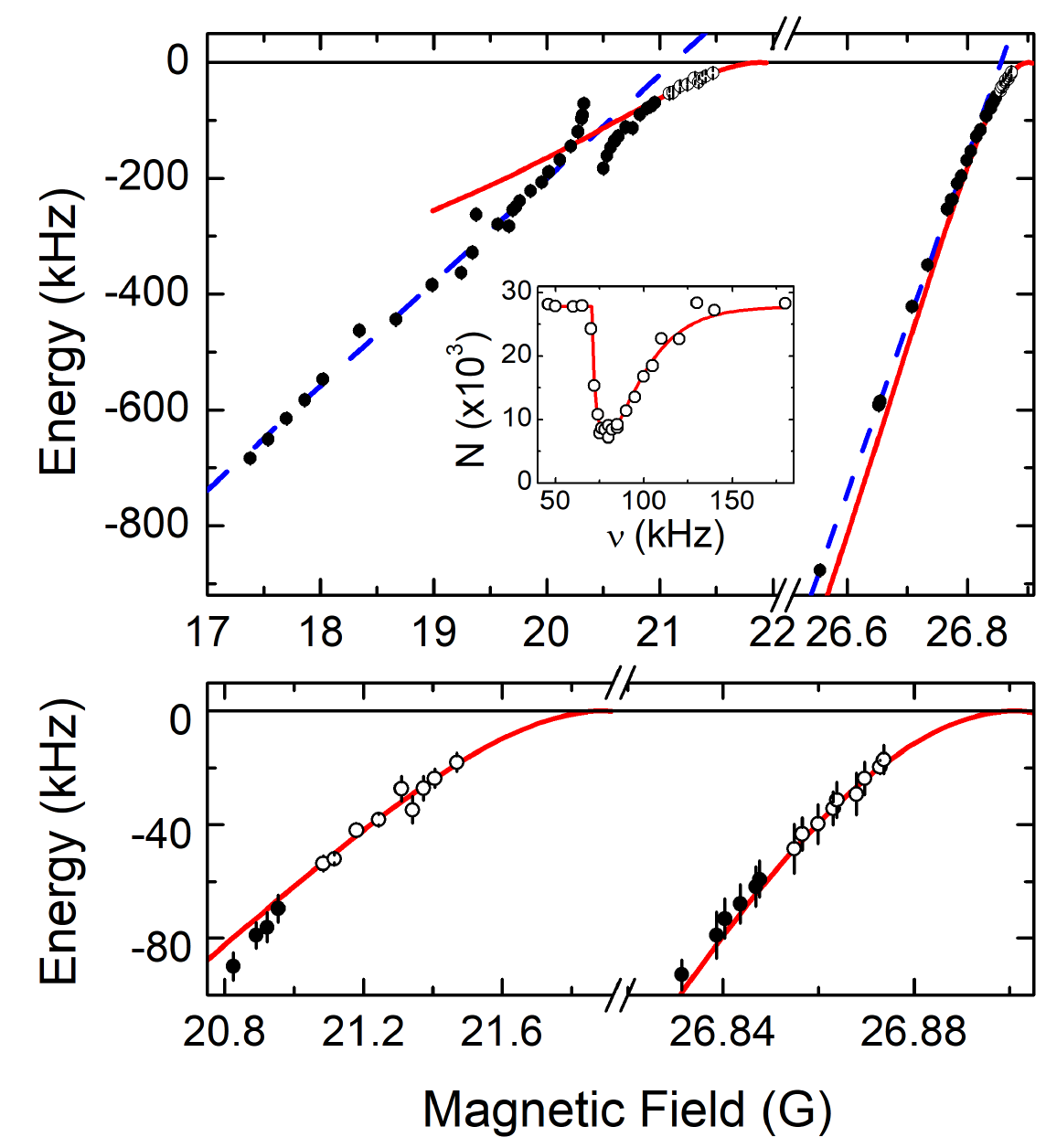 |
We have characterized the scattering properties of ultracold 162Dy atoms for magnetic fields between 6 and 30 G. In addition to the typical chaotic distribution of narrow Feshbach resonances in Lanthanides, we have discovered two rather isolated broad features. A characterization using the complementary measurements of losses, thermalization, anisotropic expansion and molecular binding energy points towards resonances of predominant s-wave character, with dimensionless strength s=0.5(3). Such resonances will ease the investigation of quantum phenomena relying on the interplay between dipole and contact interactions. E. Lucioni, et al. |
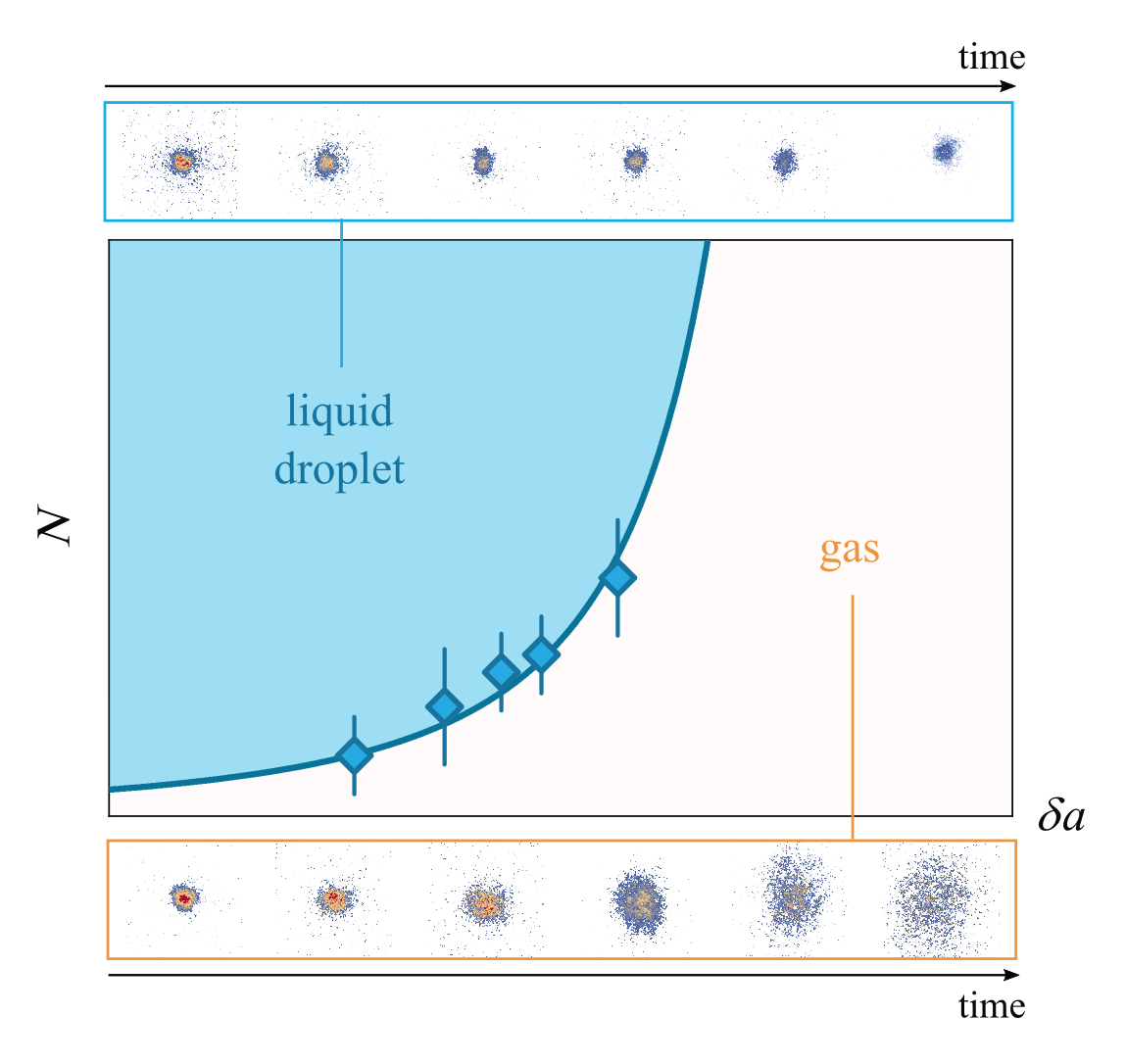 |
We report on the observation of quantum liquid droplets in a bosonic mixture. While ultracold atomic systems are commonly found in a gas phase, recent theoretical and experimental results have surpringly pointed out that under special circumstances condensed atoms can form self-bound liquid-like droplets. At the origin of this new phase is the coexistence of repulsive and attractive forces that perfectly balance to generate the self-binding mechanism. The two competing energies are provided by the mean-field interaction and the first beyond mean-field correction, the so-called Lee-Huang-Yang term. We observe the existence of such self-bound ensembles in a bosonic mixture of K-39 atoms and we characterize their equilibrium properties. Quantum droplets are predicted to be macroscopic zero-temperature objects, due to their peculiar energy spectrum, where no discrete modes are expected below the particle emission threshold. The observation reported in this work certainly opens the way to further studies of the exotic properties of this new phase, which also constitutes the only known quantum liquid together with helium nanodroplets. G. Semeghini, et al., |
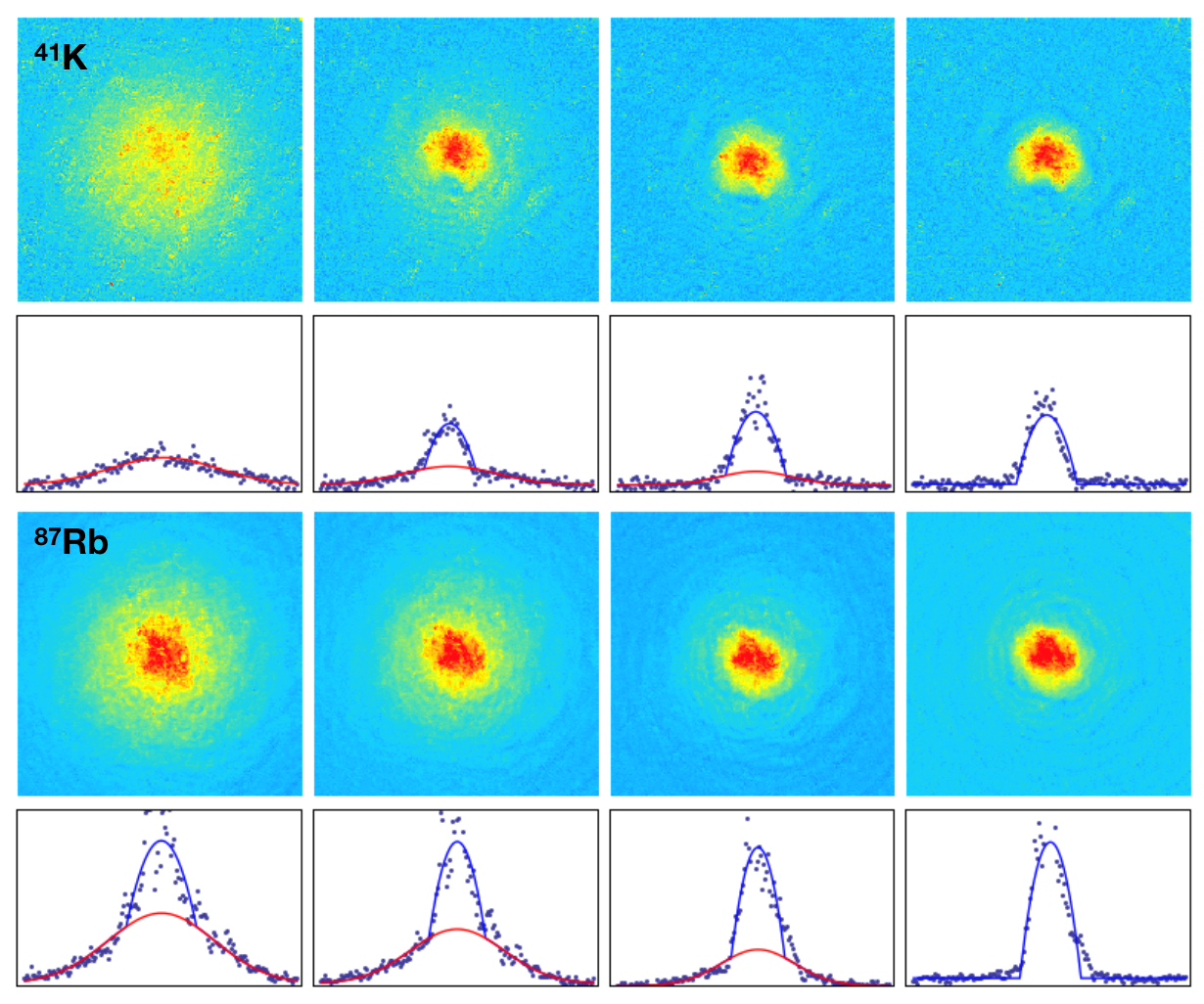 |
We have realized a double-species Bose-Einstein Condensate of 87Rb-41K both in the F=2, mF=2 hyperfine states. The preparation of the superfluid mixtures involves different cooling stages. After a double-MOT phase we transfer the mixture in a magnetic quadrupole field where Rb is evaporated by a microwave radiation resonant on the (F=2, mF=2) - (F=1, mF=1) transition while K is sympathetically cooled by thermal contact with Rb. When the temperature is low enough, we transfer the mixture in a crossed optical trap through an intermediate stage of a hybrid magneto-optical trapping potential. The last stage of cooling is performed by pure optical evaporation in the crossed optical potential. At the end of our typical experimental runs we produce pure condensates of 6×104 atoms for both atomic species. |
